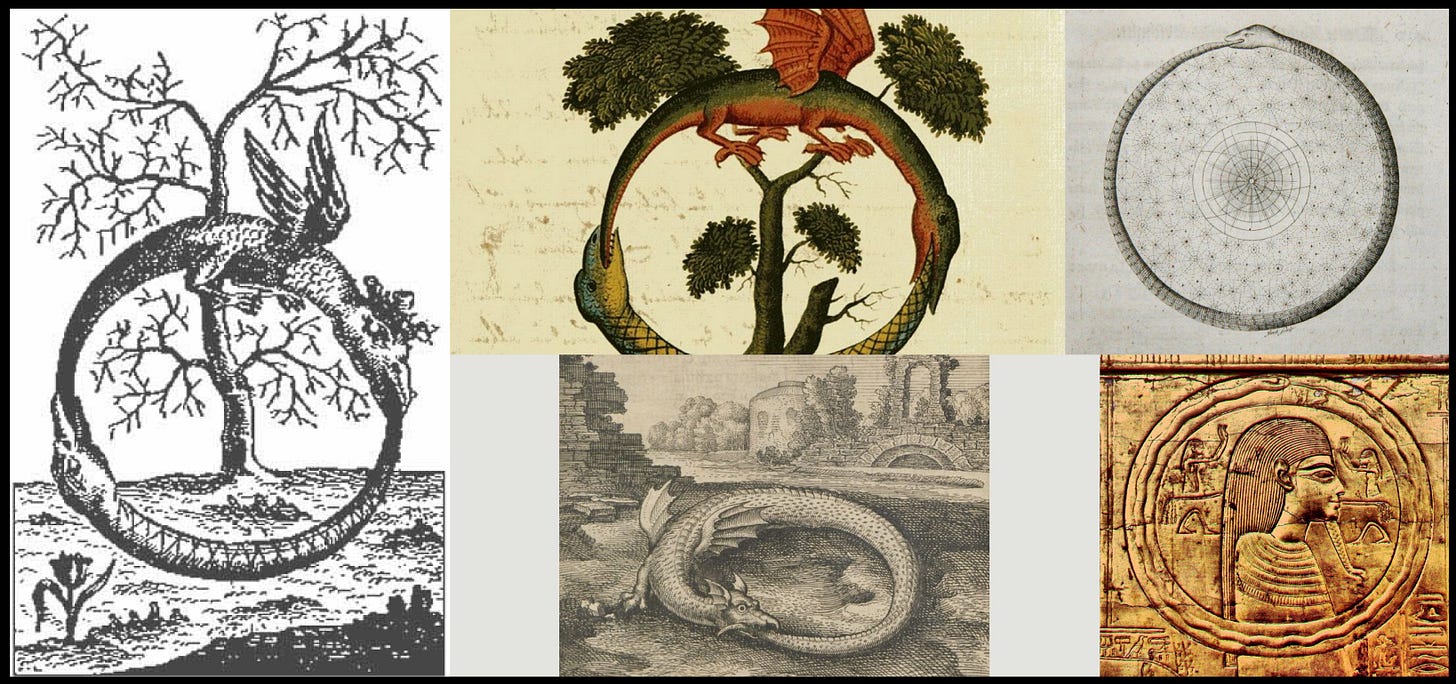After reflecting on the symbol of the snake as a friend's recommendation, I started seeing it everywhere and recognizing its significance.
It is a great exercise to select a symbol and go through all its characteristics:
How does the snake move? What does it eat? What does it look like? Etc.
It first saw its significance as this fundamental symbol of time, the Ouroboros from the ancients. A symbol of the cyclical nature of time.
So one interpretation is that this is the representation of the snake as the dragon, the unknown that must be conquered, made known. The hero is the one that goes beyond the known borders and defeats the dragon, often rewarded with a virgin.
So the snake started forming itself in my mind as a symbol of chaos, and a representation of time on the animal scale.
When I saw it at the Louvre museum the same motif being repeated, it had a strong impact on me, and later on at the top of Il Duomo, in Milan, I chanced upon this very similar depiction of the snake.
This struck me like a lightning bolt. It was akin to discovering a physical, ancient Easter egg in real life that was communicating some truth to me.
The Duomo is a huge, magnificent, intricate masterpiece of architecture. Much of its content is cryptic to me due to the sheer amount of sculpted rock you see, as well as many figures in stained glass, sculptures, and paintings often made centuries apart. And yet this single pillar jumped at me and produced a powerful experience.
After that, I decided to go further in my exploration of the snake and I remembered the depictions of it in contemporary culture (more on that in the next essay).
Here it is present in Conan the Barbarian, a symbol very similar to the one I saw at the Duomo:
And recently in great movie The Northman (which is heavily inspired by the vengeful story of Conan and follows its exact same plot structure) borrows the same symbol as well.
When you recognize the symbol and remember its significance, it is as if the entity of the snake is talking to you through it.
In fact, the unpacking of the meaning of the symbol in this new context is akin to the aesthetic experience.
Developing this vision enhances our perspective on past traditions and symbols, for it changes the way we see them. The ancients saw the world through these symbols and embedded them into their epoch's architecture and arts.
It is very different from the currently effortlessly assumed position of materialism, where seeing a representation of a snake means simply the crude depiction of a random animal.
Furthermore, doing this exercise properly will expose your mind to the symbol in such a profound manner that you will start noticing it more around you, taking each apparition in its context and deriving more meaning from the interaction.








